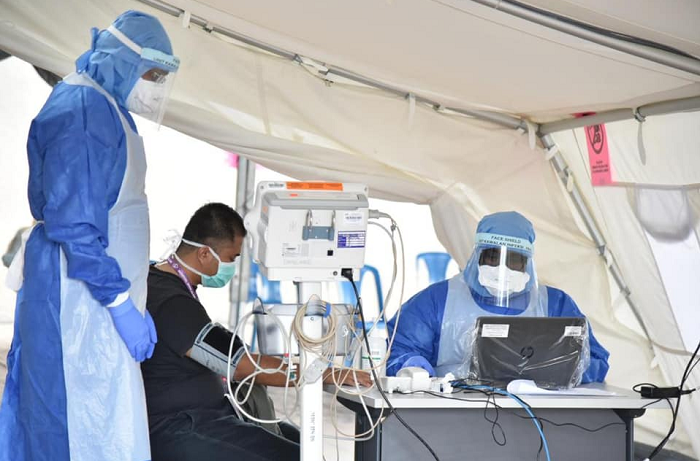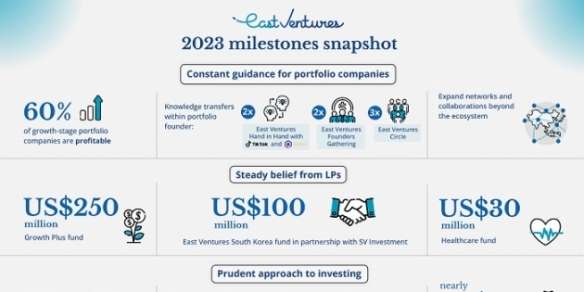Recession Today, Opportunity Tomorrow: How To Build Sustainability Today And Prepare For The Coming Economic Recovery
By Dr V. Sivapalan April 10, 2020
- Market likely to see a U shaped recovery thanks to heavy govt spending
- Will you be around to take advantage of recovery when it happens?

As I write this article more than 1.5 million people worldwide have been infected by COVID-19, ninety thousand people have lost their lives and the pandemic is escalating in the United States and India. My heart goes out to those who have lost loved ones especially the older generation. I pray that governments will take painful but necessary measures to curb further infections and deaths and that the people will comply. The rest of us can only stay at home and pray for the safety of the most vulnerable in society.
While this unfolds another tragedy is happening - a recession. There is no doubt in my mind that a recession is already here. Over the last two weeks 10 million workers have been displaced in the US, the largest in history and there’s already a 10% unemployment rate there, more than during the great recession of 2008-2009. It is only going to get worse as the US starts enforcing a nationwide lockdown. Some experts predict a 15% to 30% unemployment rate in the US; worse than the Great Depression of 1929 when the average was about 20%.
Bank Negara Malaysia predicts a 2020 GDP growth rate of between -2% to +0.5% while the World Bank predicts a contraction of -0.1% this year which means more likely we will see a recession too – a mild one. This may change as the rest of the world grapples with the pandemic. If our major trading partners or the rest of the world falls into a worse recession, then ours may be worse as well. There is still too much uncertainty to make a better prediction.
Depth And Length Of The Recession
The bigger question is not just how bad the recession will be but how long will it last? There are generally three types of recession and recovery scenarios. There is the “V” shaped recession which predicts a sharp and fast fall in economic growth, often caused by what they call a “black swan” or totally unpredictable event like the current pandemic, followed by an equally fast and sharp rebound. The recession after the 9-11 terrorist attack in the US is an example. Recovery is generally quite fast on average about 12 months.
Then there is the “U” shaped recession, which can be a fast or slower fall but it stays down for a longer period and then recovers to pre-recession levels. Imagine the letter “U” and you get what I mean. A “U” shaped recession often takes between 12 to 36 months and the recovery takes longer than a “V” shaped recovery.
Then there is the “L” shaped recovery, which starts with a fast or slow fall but takes a very long time to recover. This is often classified as a depression and can take a decade for the economy to recover. The recovery period is also not easy to predict. The Great Depression in the US that lasted from 1929 to 1939 is such an example. In fact if it wasn’t for World War II that started in 1939, the depression may have lasted even longer. The war required the US government to spend on war preparations and it got the factories to work producing weapons and other war needs and this got the US out of the depression. Yes government spending works.
I have personally been through many slowdowns and recessions in Malaysia from the 1984-86 oil shock, the 1994 stock market crash, the 1997-98 Asian Financial Crisis (AFC), the dot com bust in 2000, the 9-11 terrorist attacks in 2001, the 2008 Global Financial Crisis (GFC) and now the COVID-19 pandemic induced 2020 recession.
So this is nothing new to me. And one thing is certain – every recession ends with a recovery, often a strong one that lasts for a few years. The AFC was probably the worst in Southeast Asia (SEA) and it lasted a few years but by the 2000’s all the SEA economies recovered strongly. The GFC was the worst to hit the world since the Great Depression but then we had 10 years of strong economic growth.
Hence the most important lesson is this: that there will be a recovery and when that recovery happens, will you be around to take advantage of the strong growth or will you be watching from the sidelines wondering “what if?”
In my opinion, and most analysts predict this as well, we will experience a “U” shaped recession, which means a sharp fall followed by recovery in 12 to 36 months. If that is the case, as an entrepreneur how do you prepare for such a situation? What must you do?
Before we go there let’s explore what will happen in the next couple of years.
The Recessionary Period
It will be painful. Many people will lose their jobs, businesses will close and there may be a dramatic change in the economy. Entire industries may fail, some will recover but many won’t.
- Competition and closures
Many companies with weak financials and product-market fit will close. Most startups fall into this category. A recent survey by the Malaysian Global Innovation and Creativity Centre (MaGIC) shows that 40% of startups can’t survive beyond 2 months and only 2.9% can survive beyond 12 months. These are dire figures but goes to show that we have too many startups with weak fundamentals. This means there will be less competition so while it is bad for those that have to shutter, it will be good for survivors as it gives them a better chance to build stronger companies.
- Availability of Talent
As more startups close, their employees and even founders will be looking for jobs or be available to join the management teams of the survivors. This is good because over the last few years talent has been one of our biggest problems. Many of them will also have startup experience and this is great for the survivors.
- Funding
While existing funds still have money to invest they are going to be more selective and their mandates or criteria will change. We are already seeing more and more venture capitalists talking about looking for companies with a path to profitability. This is common. It happened after the dot com bust, the GFC and now this crisis. So generally over the next couple of years only the stronger companies with better fundamentals and solid revenue models will get funding. I predict however, that investors will return to their market growth at all costs model in the future as they always do, but the next three years will be about fundamentals.
So while funding is still available it will be harder to get.
- Market Access
In a recession, companies and consumers will be a lot more careful about spending. High levels of unemployment means consumers have less money to spend so they will be selective with their spending. Companies will want to preserve cash to ensure sustainability and maintaining profitability so they will only spend on necessaries. However, they will spend on technology that improves productivity, reduces costs and increases their bottom line.
So while access to markets will be tougher, companies that offer solutions and products that their market needs will still be able to grow. There will always be opportunities so companies have to adapt and be creative in capturing these opportunities.
- Market Changes
The market will change and in some ways it may be a dramatic change. The demand for some products will disappear but new demands will appear. For example, more things will be done online as people have learnt to use online tools during the Movement Control Order. E-commerce will flourish even more, retail sales will drop, more people may be working from home and this may lead to less office space requirements and much more.
In every industry or sector there will be changes and entrepreneurs have to study their own markets to determine what these changes are and prepare for and adapt to these changes.
The Recovery
In a “U” shaped recession there will be a reasonably fast recovery. Why will we see a “U” shaped recovery? It’s mainly because governments all over the world have learnt that by spending money and pump priming their economies, they will literally “force” their economies to grow. It happened during the Great Depression and also during the GFC. During the AFC, the IMF imposed prudent spending guidelines on many countries that led to a slower recovery. The same happened in much of Europe with economies like Greece and Spain having slow growth because they couldn’t spend themselves out of a recession.
This time around led by the US with their US$2 trillion stimulus package, every government is doing the same. Even the Malaysian government has a US$57.5 billion (RM250 billion) stimulus package with more to come to save the economy from going into a deeper recession. I believe we will see record spending by governments like we’ve never seen before. All this will trickle down into the economy and induce growth.
With interest rates at or near zero among the OECD countries and in some cases negative interest rates, companies find that borrowing costs are extremely low and just like during the GFC sooner or later companies will borrow to grow their companies. This will lead to higher employment and more money in the economy.
A recovery will happen that is a given, likely in the second half of 2021. That being the case what do entrepreneurs have to do to prepare for this?
Some of the companies that we have coached including from the Coach & Grow Program are very concerned about the future and I’ve been asked on several occasions already what they need to do to overcome the current problems and how do they prepare for the future? I’ll address this in the second part of this article tomorrow.
Part 2: Preparing for the worst but looking forward to the future
Dr. Sivapalan Vivekarajah has a Ph.D in Venture Capital from the University of Edinburgh, Scotland. He is the cofounder and Senior Partner of Scaleup Malaysia Accelerator (www.scaleup.my) and cofounder of Proficeo Consultants (www.proficeo.com). Visit his LinkedIn
Related Stories:
Preparing for the worst but looking forward to the future


